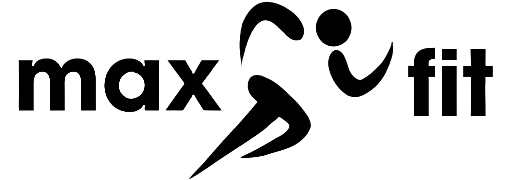The core includes the rectus abdominis, internal and external obliques, transverse abdominis, and the muscles of the lower back (such as the erector spinae), along with supporting structures like the glutes, hip flexors, and pelvic floor. Together, these muscles stabilize the spine and pelvis, allowing for controlled movement and effective force transmission.
A strong core:
- Enhances athletic performance by improving balance, agility, and power.
- Supports proper posture and reduces the risk of lower back pain.
- Contributes to efficient movement in everyday activities.
- Helps prevent injuries by stabilizing joints and reducing muscular imbalances.
- Plays a role in improving breathing mechanics and overall endurance.
Benefits of a Strong Core
Improved Functional Strength
A strong core is critical for all movement. It acts as a central link between the upper and lower body, allowing energy to transfer effectively during activities such as lifting, twisting, and running. Improved core strength results in better performance in sports and daily tasks.
Enhanced Balance and Stability
Core training improves proprioception and neuromuscular control, which are essential for balance. This increased stability can reduce the risk of falls and other injuries, especially as we age.
Better Posture and Reduced Pain
Core muscles help maintain proper spinal alignment. Strengthening these muscles alleviates the strain on the lower back and shoulders, reducing the risk of chronic pain and postural problems.
Increased Athletic Performance
For athletes, a strong core translates into improved speed, agility, and power. Many sports require sudden changes in direction or explosive movements, which are supported by a stable and strong midsection.
Enhanced Metabolic Health
Core training can boost overall muscle mass, which in turn increases the resting metabolic rate. This supports weight management and overall metabolic health, aiding in better blood sugar control and reducing the risk of metabolic syndrome.
Key Components of Core Strength
Stability
Core stability involves maintaining control of the spine and pelvis during movement. Exercises that focus on static holds, like planks, train the deep stabilizer muscles (such as the transverse abdominis) to keep your body aligned.
Endurance
Core endurance refers to the ability of the core muscles to sustain activity over time. Endurance training for the core allows you to maintain proper form throughout long workouts or athletic events.
Power
Core power is the ability to generate force quickly through the core muscles. This quality is essential for explosive movements in sports and daily activities that require sudden bursts of energy.
Effective Core Exercises
Static Holds
- Planks: A foundational exercise for core stability. Variations include the front plank, side plank, and reverse plank. Holding these positions for 30 seconds to a minute helps build endurance.
- Hollow Holds: Lying on your back and lifting your shoulders and legs slightly off the ground challenges the deep core muscles.
Dynamic Movements
- Crunch Variations: While traditional crunches target the rectus abdominis, variations such as bicycle crunches also engage the obliques.
- Leg Raises: These target the lower abs and hip flexors while engaging the lower back for stabilization.
- Mountain Climbers: Combining a plank position with dynamic leg movement, this exercise improves both core strength and cardiovascular endurance.
Anti-Rotation and Stability Exercises
- Pallof Press: Using a cable machine or resistance band, this exercise challenges your core to resist rotational forces, thereby enhancing stability.
- Russian Twists: When done with proper form, they engage the obliques and improve rotational strength.
- Medicine Ball Throws: Dynamic and functional, these exercises not only build core power but also mimic real-world movements.
Compound and Functional Movements
- Squats and Deadlifts: Although they target the lower body, these compound lifts require significant core engagement to maintain proper posture and balance.
- Overhead Presses: Lifting weights overhead challenges the core to stabilize the spine, reinforcing both strength and stability.
Stability on Unstable Surfaces
- BOSU Ball Exercises: Performing exercises on unstable surfaces forces the core to work harder to maintain balance.
- Stability Ball Workouts: Using a stability ball for exercises such as ball crunches or back extensions adds an extra layer of difficulty to core training.
Programming for Core Strength
Frequency and Volume
For beginners, core exercises can be integrated 2–3 times per week. As you progress, increasing the volume (by adding sets or duration) and complexity (through advanced variations) is key to continued improvement.
Progressive Overload
Apply the principle of progressive overload by gradually increasing the challenge:
- Increase the duration of holds (e.g., extending a plank from 30 to 60 seconds).
- Add resistance using weights or resistance bands.
- Incorporate advanced variations that demand more from the core.
Periodization
Design your training program in phases:
- Base Phase: Focus on fundamental exercises and endurance.
- Strength Phase: Introduce weighted core exercises and dynamic movements.
- Power Phase: Emphasize explosive movements and plyometrics to improve core power.
- Maintenance Phase: Continue with a balanced routine to maintain strength and stability.
Integration with Overall Training
A strong core enhances all aspects of fitness. Incorporate core training as part of your warm-up, circuit training, or as a dedicated session. Complement your core work with overall resistance training for balanced muscular development.
Nutrition and Recovery
Nutritional Support
Proper nutrition is critical for building a strong core. Ensure you consume:
- Protein: Essential for muscle repair and growth. Aim for a balanced intake throughout the day.
- Carbohydrates: Provide the energy needed for intense core workouts.
- Healthy Fats: Support overall hormonal balance and recovery.
- Hydration: Adequate water intake is necessary for optimal muscle function.
Recovery Strategies
Allow adequate recovery between core training sessions to prevent overtraining. Techniques include:
- Active Recovery: Light activities like walking or yoga to promote blood flow.
- Sleep: Aim for 7–9 hours per night to support muscle repair.
- Stretching and Foam Rolling: These practices improve flexibility and reduce muscle soreness.
Common Mistakes and How to Avoid Them
Poor Form
Executing core exercises with improper form can lead to injuries, particularly in the lower back. Focus on controlled movements and proper alignment rather than speed or quantity.
Neglecting the Entire Core
Many routines focus solely on the “six-pack” muscles. A balanced program should target all core muscles, including deep stabilizers, lower back, and hip muscles, to ensure overall strength and stability.
Overtraining
Performing core exercises too frequently without adequate rest can lead to fatigue and hinder progress. Ensure you schedule rest days and monitor your body’s response to avoid burnout.
Lack of Progression
Sticking with the same routine over time can lead to plateaus. Incorporate progressive overload by increasing duration, resistance, or exercise complexity to continually challenge your core muscles.
Advanced Core Training Techniques
Incorporating Plyometrics
Plyometric core exercises, such as medicine ball slams or rotational throws, improve explosive power and dynamic stability. These exercises mimic sports-specific movements and enhance overall performance.
Using Unstable Surfaces
Training on unstable surfaces, such as BOSU balls or stability balls, forces the core to engage more deeply for balance and control. This can translate to improved functional stability in daily activities and sports.
Integrating Resistance Bands and Cable Machines
Adding resistance to core exercises with bands or cables provides an extra challenge, encouraging muscle growth and endurance. These tools are particularly effective for anti-rotation exercises like the Pallof press.
Functional Core Training
Functional exercises that incorporate multiple muscle groups and mimic real-life movements are highly effective. Compound lifts like squats, deadlifts, and overhead presses demand core stabilization, offering comprehensive strength benefits.
Monitoring and Evaluating Progress
Tracking Performance Metrics
Measure improvements through:
- Timed Planks: Increase in duration reflects greater endurance.
- Repetition Counts: More repetitions in exercises like Russian twists indicate enhanced strength.
- Functional Tests: Performance in compound movements can serve as indirect measures of core strength.
Using Technology
Wearable devices and apps can track workout performance, including range of motion, repetition velocity, and recovery times. This data can help fine-tune your training program and ensure progressive overload is being applied effectively.
Conclusion
Building a strong core requires a multifaceted approach that integrates proper exercise selection, progressive programming, nutritional support, and adequate recovery. By focusing on stability, endurance, and power through a variety of core exercises—ranging from static holds to dynamic, functional movements—you can enhance your athletic performance, prevent injuries, and improve overall quality of life. A balanced and progressively challenging core training routine not only sculpts visible muscles but also creates a solid foundation for all physical activities. Consistency, proper form, and smart progression are key to developing a core that is strong, stable, and capable of supporting your long-term health and fitness goals.

